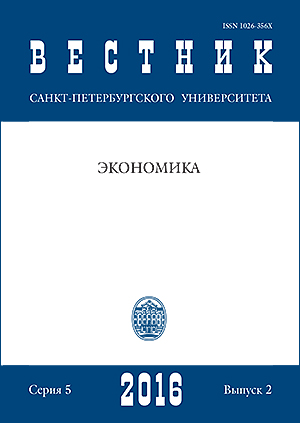Investigation of Sanctions and Oil Price Effects on the Iran-Russia Trade by Using the Gravity Model
DOI:
https://doi.org/10.21638/11701/spbu05.2016.204Abstract
Sanctions introduced in 2006 are said to have had a crucial effect on the Iranian economy in the last decades and have affected the economic relations between Iran and the rest of the World. It has been asserted repeatedly that sanctions against Iran have been hindering its foreign trade and its access to the global market and that sanctions have caused Iran to become less globalized and more isolated. As Iran’s economy is highly sensitive to oil prices due to its high reliance on oil revenues it might affect Iran’s trade with other nations. Our study explores how much various sanctions (financial and nonfinancial) and oil price have affected the foreign trade of Iran with Russia during 1994–2013. The research provides a detailed study of the impact of fi nancial and non-financial sanctions on Iran-Russia foreign trade and relation of oil price and Iran- Russia foreign trade. The findings show the negative relationship between financial, non-financial sanctions and oil price shocks with the Iran-Russia trade.
Refs 37. Figs 6. Tables 7.
Keywords:
sanction, oil price, Iran-Russia trade, gravity model
Downloads
References
References in Latin Alphabet
Translation of references in Russian into English
Downloads
Published
How to Cite
Issue
Section
License
Articles of the St Petersburg University Journal of Economic Studies are open access distributed under the terms of the License Agreement with Saint Petersburg State University, which permits to the authors unrestricted distribution and self-archiving free of charge.






